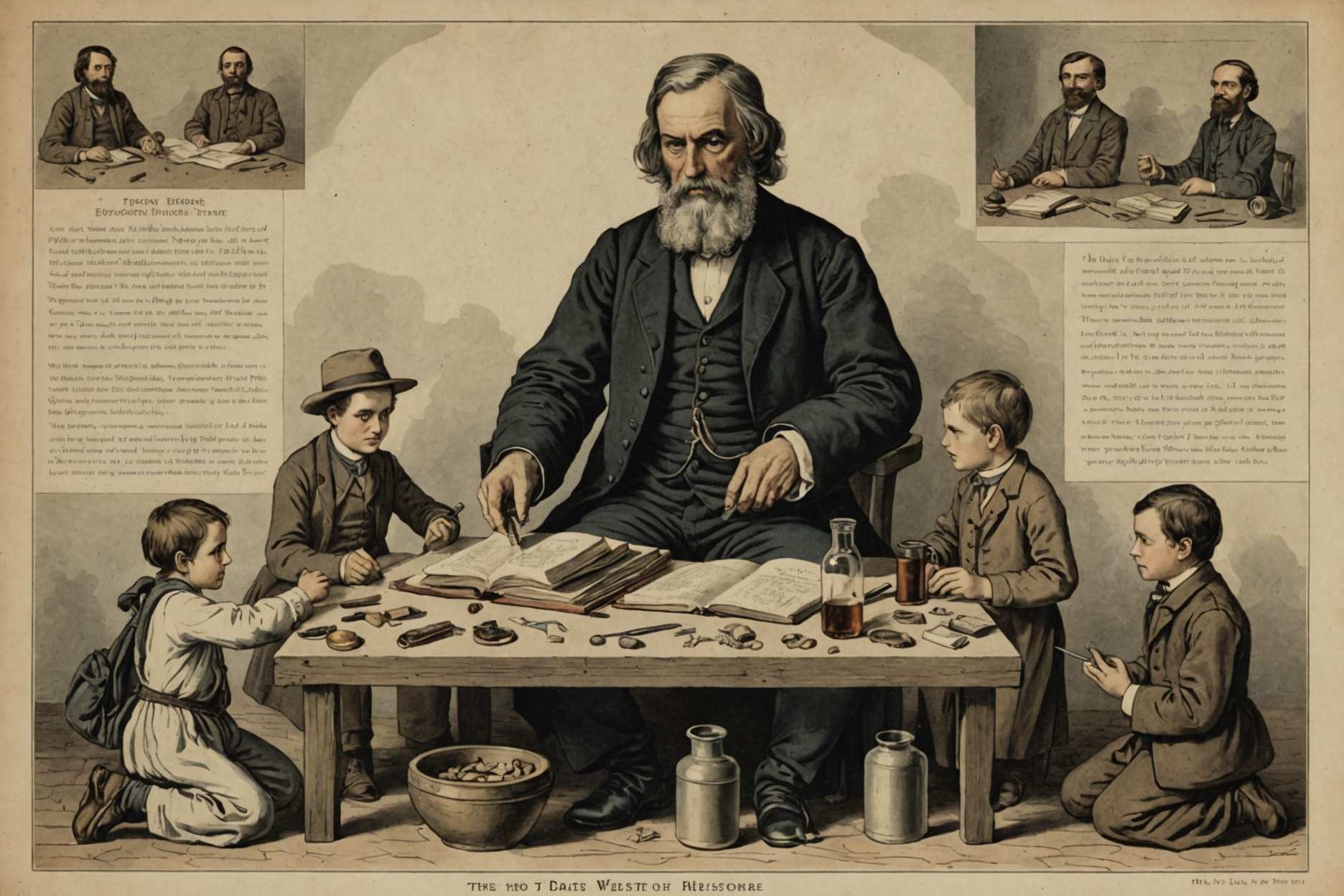
CAPE CANAVERAL, Fla. (AP) — Blue Origin launched its huge New Glenn rocket Thursday with a pair of NASA spacecraft destined for Mars.
It was only the second flight of the rocket that Jeff Bezos’ company and NASA are counting on to get people and supplies to the moon — and it was a complete success.
The 321-foot (98-meter) New Glenn blasted into the afternoon sky from Cape Canaveral Space Force Station, sending NASA’s twin Mars orbiters on a drawn-out journey to the red planet. Liftoff was stalled four days by lousy local weather as well as solar storms strong enough to paint the skies with auroras as far south as Florida.
In a remarkable first, Blue Origin recovered the booster following its separation from the upper stage and the Mars orbiters, an essential step to recycle and slash costs similar to SpaceX. Company employees cheered wildly as the booster landed upright on a barge 375 miles (600 kilometers) offshore. An ecstatic Bezos watched the action from Launch Control.
“Next stop, moon!” employees chanted following the booster's bull's-eye landing. Twenty minutes later, the rocket's upper stage deployed the two Mars orbiters in space, the mission's main objective. Congratulations poured in from NASA officials as well as SpaceX's Elon Musk, whose booster landings are now routine.
New Glenn’s inaugural test flight in January delivered a prototype satellite to orbit, but failed to land the booster on its floating platform in the Atlantic.
The identical Mars orbiters, named Escapade, will spend a year hanging out near Earth, stationing themselves 1 million miles (1.5 million kilometers) away. Once Earth and Mars are properly aligned next fall, the duo will get a gravity assist from Earth to head to the red planet, arriving in 2027.
Once around Mars, the spacecraft will map the planet’s upper atmosphere and scattered magnetic fields, studying how these realms interact with the solar wind. The observations should shed light on the processes behind the escaping Martian atmosphere, helping to explain how the planet went from wet and warm to dry and dusty. Scientists will also learn how best to protect astronauts against Mars' harsh radiation environment.
“We really, really want to understand the interaction of the solar wind with Mars better than we do now,” Escapade’s lead scientist, Rob Lillis of the University of California, Berkeley, said ahead of the launch. “Escapade is going to bring an unprecedented stereo viewpoint because we’re going to have two spacecraft at the same time.”
It’s a relatively low-budget mission, coming in under $80 million, that's managed and operated by UC Berkeley. NASA saved money by signing up for one of New Glenn’s early flights. The Mars orbiters should have blasted off last fall, but NASA passed up that ideal launch window — Earth and Mars line up for a quick transit just every two years — because of feared delays with Blue Origin's brand-new rocket.
Named after John Glenn, the first American to orbit the world, New Glenn is five times bigger than the New Shepard rockets sending wealthy clients to the edge of space from West Texas. Blue Origin plans to launch a prototype Blue Moon lunar lander on a demo mission in the coming months aboard New Glenn.
Created in 2000 by Bezos, Amazon's founder, Blue Origin already holds a NASA contract for the third moon landing by astronauts under the Artemis program. Musk’s SpaceX beat out Blue Origin for the first and second crew landings, using Starships, nearly 100 feet (30 meters) taller than Bezos' New Glenn.
But last month NASA Acting Administrator Sean Duffy reopened the contract for the first crewed moon landing, citing concern over the pace of Starship’s progress in flight tests from Texas. Blue Origin as well as SpaceX have presented accelerated landing plans.
NASA is on track to send astronauts around the moon early next year using its own Space Launch System, or SLS, rocket. The next Artemis crew would attempt to land; the space agency is pressing to get astronauts back on the lunar surface by decade’s end in order to beat China.
Twelve astronauts walked on the moon more than a half-century ago during NASA's Apollo program.
___
The Associated Press Health and Science Department receives support from the Howard Hughes Medical Institute’s Department of Science Education and the Robert Wood Johnson Foundation. The AP is solely responsible for all content.
LATEST POSTS
- 1
 車7社、米関税で7800億減益 9月中間、3社が赤字転落(共同通信)
車7社、米関税で7800億減益 9月中間、3社が赤字転落(共同通信) - 2
 古すぎるゲームを復活させるのは、もはや難しいのか? リメイク版「ドラゴンクエスト」が賛否両論の理由(東洋経済オンライン)
古すぎるゲームを復活させるのは、もはや難しいのか? リメイク版「ドラゴンクエスト」が賛否両論の理由(東洋経済オンライン) - 3
 高止まりで“コメ離れ”の兆しも? 銘柄米が3週連続で過去最高値 「増産」が一転「減産」方針で現場からは不安の声【サンデーモーニング】(TBS NEWS DIG Powered by JNN)
高止まりで“コメ離れ”の兆しも? 銘柄米が3週連続で過去最高値 「増産」が一転「減産」方針で現場からは不安の声【サンデーモーニング】(TBS NEWS DIG Powered by JNN) - 4
 Vote In favor of Your #1 sort of film
Vote In favor of Your #1 sort of film - 5
 Get To Be familiar with The Historical backdrop Of Western Medication
Get To Be familiar with The Historical backdrop Of Western Medication
 Vote in favor of the subject that you see as generally captivating and intelligent!
Vote in favor of the subject that you see as generally captivating and intelligent! Magnetic fossils may reveal ancient creature's internal 'GPS system'
Magnetic fossils may reveal ancient creature's internal 'GPS system' Setbacks in Texas and elsewhere put Republicans' redistricting hopes in doubt as key deadlines loom
Setbacks in Texas and elsewhere put Republicans' redistricting hopes in doubt as key deadlines loom Become the best at Discussion: 6 Procedures for Progress
Become the best at Discussion: 6 Procedures for Progress The Conclusive Manual for Spending plan Travel: Opening Undertakings on a Tight budget
The Conclusive Manual for Spending plan Travel: Opening Undertakings on a Tight budget 柄本時生&さとうほなみが結婚発表「感謝と初心を忘れず、ふたりで歩んで参ります」じゃれ合う2ショット披露 36歳同学年カップル(スポーツ報知)
柄本時生&さとうほなみが結婚発表「感謝と初心を忘れず、ふたりで歩んで参ります」じゃれ合う2ショット披露 36歳同学年カップル(スポーツ報知) Surveys of 6 Hot Savvy Beds
Surveys of 6 Hot Savvy Beds Manual for Purchasing a Modest Jeep Wrangler for Seniors
Manual for Purchasing a Modest Jeep Wrangler for Seniors Doritos and Cheetos dial back the bright orange in new versions without artificial ingredients
Doritos and Cheetos dial back the bright orange in new versions without artificial ingredients













